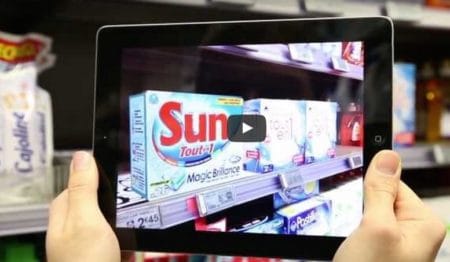2015 AIA Compensation Reports
The AIA report gives exclusive access to salary and compensation trends for 39 architecture positions in 27 states, 27 metro areas and 15 cities.
The 2015 AIA Compensation Survey includes a wealth of information of interest to both individuals and firms, while the Metro Area report overviews executive summary data for all firms, including seven firm size categories, five firm revenue categories and data for 11 metro areas across the country. These reports, considered the industry’s most comprehensive resource on salary and compensation, will no doubt give a better understanding of one’s values and worth and help make the best decision regarding important career or business moves.
Three Augmented & Virtual Reality apps for design and construction
The new technology is promising for AEC—AR computer-generated objects and textures to real-world environments, while VR immerses users in a digital simulation of a real environment. The company that is behind it is Augment—a VC-backed startup, with offices in Paris and Orlando, FL.—and lets users overlay building plans and other 2D collateral on a 3D BIM model.

01 – Augment provides a View & Share for your 3D models in Augmented Reality on iPad, iPhone and Android. All rights reserved.
Lindsay Boyajian, marketing manager at Augment, says “A lot of people aren’t even aware of AR. They think it’s hard to use. We want to change the narrative around AR (augmented reality) technology. It’s not this futuristic, far-off technology. It’s for now, and it’s adding great business value for architects.”
Designed for a smartphone or tablet, Augment offers plug-ins for Sketchup, Revit, 3DS Max, SolidWorks, and other design software. Once building models are uploaded, team members can use their device’s camera to scan either paper plans or the physical jobsites, bringing the project to life on the screen. Users can then navigate the project through the app. Other features include photo sharing and soon, Boyajian says, the ability to change the colors of objects in the models. Augment comes with a selection of models for public use. Additional features such as custom models and advanced tracking are available at a price set per client.
SmartReality was designed for the AEC sector and works with many 3D software programs, including Revit, according to the company. It allows users to turn 2D plans into interactive 3D models on a tablet through a VR headset like Oculus Rift VR. Once it’s converted, project team members can use SmartReality to scan their paper plans with the device’s camera, syncing it with the correct 3D model.
There is another version of the app that the company also developed which is compatible with tablets that run on Google’s Project Tango scanning software and allows users to walk through a floor plan while the virtual model appears around them.
Twinmotion invite for Twinmotion 2015 Webinar
The webinar is an exclusive for an invitation to discover a new method of presenting architectural projects with the realtime 3D immersion tool: Twinmotion. For those who have not heard about Twinmotion, it’s a real-time visualization technology developed for the Windows OS that is changing the way designers and engineers interact with their models.

02 – Twinmotion 2015 Webinar will be repeated 8 times during the months of September through December.
It is compatible with every 3D modeling software that is on the market today and it’s also great for any landscape and urban planning.
The live presentation of Twinmotion 2015 is a seres of free online events, highlighting all the fantastic features this real-time 3D immersion software has to offer, including:
- Easy landscape creation
- Vegetation and forest with a few clicks
- Hundreds of own materials and objects
- Populate the scene with animated objects
- Realistic skies
- Visual effects and filter options
To register for Twinmotion Public webinar, click here.





Reader Comments
Comments for this story are closed